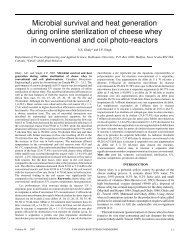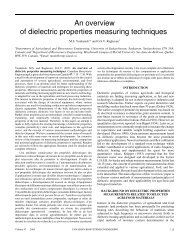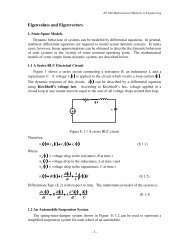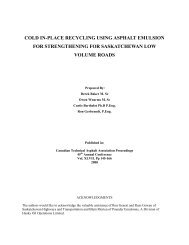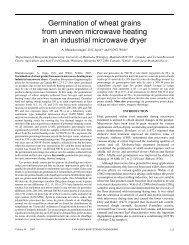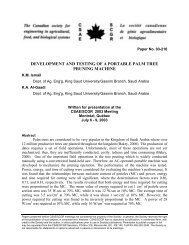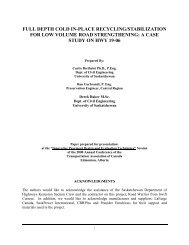Cold in Place Rock Crushing and Stabilization of Northern Low ...
Cold in Place Rock Crushing and Stabilization of Northern Low ...
Cold in Place Rock Crushing and Stabilization of Northern Low ...
Create successful ePaper yourself
Turn your PDF publications into a flip-book with our unique Google optimized e-Paper software.
Berthelot, Gerbr<strong>and</strong>t, Safronetz, <strong>and</strong> Sparks. Page: 1ABSTRACTSaskatchewan Department <strong>of</strong> Highways <strong>and</strong> Transportation (SDHT) is responsible for ma<strong>in</strong>ta<strong>in</strong><strong>in</strong>gapproximately 6500 kilometers <strong>of</strong> northern gravel surfaced roads. Many <strong>of</strong> these northern gravel roads are built onpoorly graded s<strong>and</strong> subgrades <strong>and</strong> may conta<strong>in</strong> protrud<strong>in</strong>g bedrock <strong>and</strong>/or large boulders. Because <strong>of</strong> this,washboard<strong>in</strong>g, protrud<strong>in</strong>g rocks, rutt<strong>in</strong>g <strong>and</strong> potholes are common performance problems <strong>of</strong> many northern gravelroads. Rout<strong>in</strong>e blad<strong>in</strong>g <strong>of</strong> these roads is <strong>of</strong>ten <strong>in</strong>effective because unstable s<strong>and</strong> does not ma<strong>in</strong>ta<strong>in</strong> its shape <strong>and</strong>compaction, protrud<strong>in</strong>g bedrock <strong>and</strong> boulders damage motor grader blades, boulders may become dislodged leav<strong>in</strong>gholes <strong>in</strong> the road, <strong>and</strong> dislodged boulders are a safety hazard when w<strong>in</strong>drowed along road side-slopes. Clay capp<strong>in</strong>g<strong>and</strong> base stabilization have been used to provide a stable wear<strong>in</strong>g surface, cover protrud<strong>in</strong>g bedrock <strong>and</strong> largeboulders, <strong>and</strong> reduce traffic dust. However, the long-term performance <strong>of</strong> clay capp<strong>in</strong>g <strong>and</strong> base stabilization can behighly variable <strong>and</strong> the associated costs can make these conventional solutions untenable. As a result, SDHT<strong>in</strong>vestigated the use <strong>of</strong> <strong>in</strong>-place rock crush<strong>in</strong>g <strong>and</strong> stabilization/modification for northern gravel roads withsignificant proportion <strong>of</strong> boulders <strong>in</strong> the grade us<strong>in</strong>g a rotomixer/stabilizer. Based on the f<strong>in</strong>d<strong>in</strong>gs <strong>of</strong> this study, <strong>in</strong>placerock crush<strong>in</strong>g <strong>and</strong> stabilization/modification is a technically feasible solution for elim<strong>in</strong>at<strong>in</strong>g protrud<strong>in</strong>gbedrock <strong>and</strong> boulders conta<strong>in</strong>ed near the surface. However, <strong>in</strong>-place crush<strong>in</strong>g <strong>of</strong> boulders with unconf<strong>in</strong>edcompressive strengths over 50,000 psi resulted <strong>in</strong> significant damage to the rotomixer m<strong>and</strong>rel result<strong>in</strong>g <strong>in</strong> anapproximate cost <strong>of</strong> just under $13,684 CDN per kilometer. <strong>in</strong> situ rock crush<strong>in</strong>g with subgrade stabilization <strong>and</strong>double seal was found to cost approximately $52,017 CDN per kilometer.



